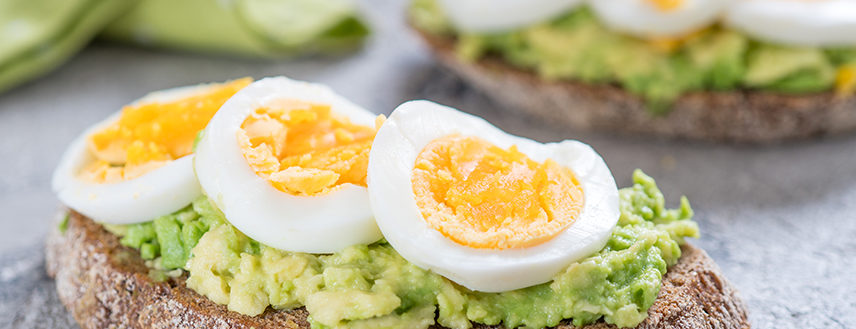
Over the years, eggs have gotten a bad rap. But the truth is, eggs are one of the best, most versatile foods out there. They also pack a nutritional punch. One large egg contains 70 calories, 5 grams of fat (but only 1.5 grams of saturated fat), 185 mg of cholesterol, 70 mg of sodium and 6 grams of protein (making them a complete protein). Perhaps more importantly, eggs do not contain carbohydrates, sugars, or fiber. They are loaded with vitamins and minerals including vitamins A, D, E, B2, B12, and Biotin as well as Iron, Potassium, Calcium and Selenium. As if that’s not enough, eggs contain choline and folate – important nutrients for supporting cell growth and brain function. But what is the healthiest way to cook eggs?
- Boiled – This might be the easiest preparation method as well. Eggs can be boiled right in their shells. Soft boiled eggs have a soft, runny yolk, while hard boiled ends with a firm yolk. Boiled is one the healthiest ways to prepare an egg because it does not require additional cooking fat, meaning no added calories. If you are watching your cholesterol, it’s also easy to scoop the yolk out and just eat the egg white.
While there is disagreement regarding the best way to cook hardboiled eggs, we have found this method to be tried and true. Place your eggs in a pan of cold water, ensuring water covers the eggs entirely by an inch. Bring them to a rolling boil. Once boiling, turn off the heat, cover the pan and let the eggs sit for 10-15 minutes. The longer you let them sit, the harder the yolk will be. Be careful not to overcook them! When they are done, run them under cold water. You can store a hardboiled egg safely in the refrigerator for up to five days, making it a perfect easy breakfast or snack on the go! - Baked – Egg bites are all the rage right now. Fill a muffin tin (be sure to use liners or spray with cooking spray) with whisked eggs, add your favorite vegetables and bake for 15-18 minutes at 350F. It doesn’t get much easier than that. Of course, egg bites are even more delicious when you add some sausage or bacon crumbles, cream, and shredded cheddar. Just remember that the more you add, the more you change the nutritional content of your eggs. However, even with all the added ingredients, these still make an excellent make-ahead, healthy breakfast you can grab on your way out the door.
- Scrambled – When many of us think of eggs, we think of scrambled eggs. Whether you crack them straight into the pan, or mix them in advance, light fluffy scrambled eggs are a delicious start to your day. You will need to add a cooking fat such as oil, butter, or cooking spray so the eggs don’t stick (even in a non-stick pan). But after that, it’s up to you how healthy to keep your eggs. Again, if cholesterol is a concern, use half eggs and half egg whites scrambled together. If you want to add a little more flavor, throw in some diced pepper or spinach. If you want to go all out, scramble in some bacon and cheese. There is no shortage of creative ways to make scrambled eggs.
- Fried – While this method of cooking eggs doesn’t seem healthy, it’s not as bad as it sounds either. Depending on what you use for cooking oil, you can keep them relatively healthy. Just a dab of butter or a smidge of light olive oil will keep the egg from sticking to the pan. Fry the egg up the way you like it flipping once. Add a pinch of salt and pepper and voila! Of course, how you serve a fried egg determines how healthy your breakfast is. If you’re going to add a side of bacon and fried potatoes, well, you’re not winning in the healthy category. However, a simple fried egg on top of whole grain toast and smashed avocado is a delicious, more nutritious meal. It makes a quick and easy lunch, too!

Leave a Reply